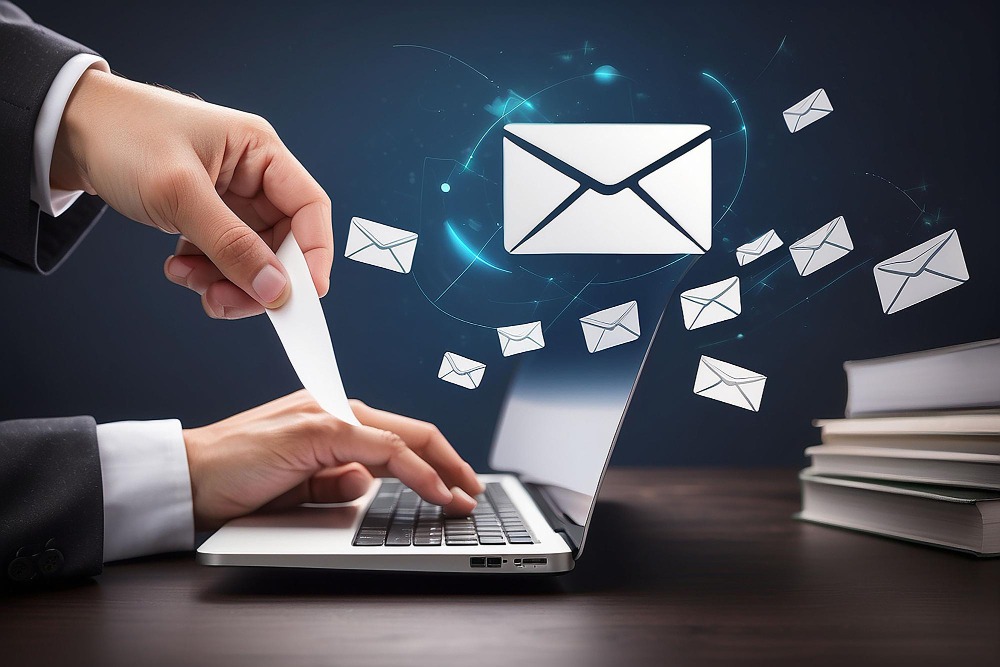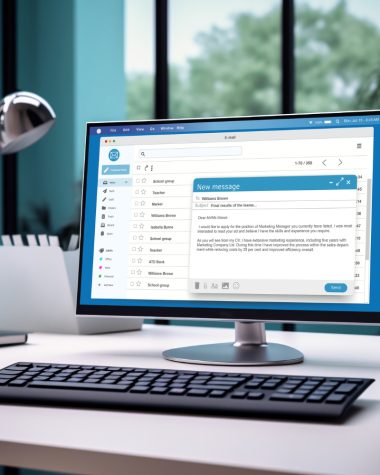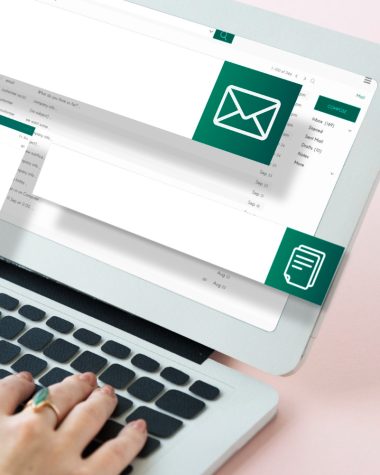Sending marketing emails is a crucial aspect of any business’s digital marketing strategy. However, the frequency of these emails can make or break their effectiveness. Too many emails, and you risk annoying your audience; too few, and you might miss opportunities to engage with them.
So, how often should you send marketing emails? The answer depends on various factors, including your audience, the nature of your business, and the type of content you’re sharing. Let’s dive into the details.
Understanding Your Audience
The first step in determining the right email frequency is understanding your audience. Every audience is different, and what works for one business may not work for another. Here are some questions to consider:
Who is your audience? Consider the demographics, preferences, and behaviors of your subscribers. Are they young professionals, retirees, or busy parents?
What do they expect? Have you set clear expectations about the frequency of your emails when they subscribed?
How engaged are they? Look at your open and click-through rates. High engagement suggests your current frequency is working; low engagement may indicate you need to adjust.
Conducting Surveys
One of the best ways to understand your audience’s preferences is to ask them directly. Conduct surveys to gather insights about their preferences. Questions could include:
How often would you like to receive emails from us?
What type of content are you most interested in?
How satisfied are you with our current email frequency?
Surveys can provide valuable feedback that can help you tailor your email strategy to better meet your audience’s needs.
Types of Marketing Emails
The type of email you are sending plays a significant role in determining frequency. There are several types of marketing emails, including:
Newsletters: Regular updates about your company, industry news, and valuable content.
Promotional Emails: Announcements about sales, discounts, and special offers.
Transactional Emails: Order confirmations, shipping notifications, and account updates.
Welcome Emails: Sent to new subscribers to introduce your brand.
Re-engagement Emails: Targeted at inactive subscribers to win them back.
Each type of email has a different purpose and optimal frequency. For instance, newsletters might be sent weekly or bi-weekly, while promotional emails could be sent more frequently during special sales periods.
Best Practices for Email Frequency
Weekly or Bi-weekly Emails: For many businesses, a weekly or bi-weekly email is a good starting point. This frequency keeps your brand top of mind without overwhelming your subscribers. It also allows you to provide a consistent stream of valuable content, which can help build trust and engagement over time.
Segmenting Your Audience: Segmenting your email list can help you tailor the frequency and content of your emails to different groups within your audience. For example, you might send more frequent emails to highly engaged subscribers and fewer emails to those who are less engaged. This approach ensures that you are meeting the needs of different segments without bombarding your entire list with emails.
Analyzing Engagement Metrics: Regularly analyzing your email engagement metrics is essential for determining the optimal frequency. Key metrics to monitor include:
Open Rate: The percentage of recipients who open your email.
Click-Through Rate (CTR): The percentage of recipients who click on links within your email.
Unsubscribe Rate: The percentage of recipients who unsubscribe after receiving your email.
If you notice a decline in open rates or an increase in unsubscribe rates, it may be a sign that you need to adjust your email frequency. Conversely, high engagement rates suggest that your current frequency is resonating with your audience.
A/B Testing: A/B testing, or split testing, is another valuable tool for determining the best email frequency. By sending emails at different frequencies to different segments of your audience, you can compare the results and identify which frequency yields the best engagement. This data-driven approach allows you to make informed decisions about your email strategy.
Considering Your Industry and Content
The nature of your business and the content you share also influence the optimal email frequency. Here are a few examples:
E-commerce: E-commerce businesses often benefit from more frequent emails, especially during peak shopping seasons like Black Friday or the holiday season. Promotional emails, product recommendations, and special offers can drive sales and keep your audience engaged. However, it’s essential to balance promotional content with value-driven content, such as product guides and customer stories, to avoid appearing too sales-focused.
B2B: For B2B companies, the email frequency might be lower, focusing on delivering high-quality, informative content. Monthly newsletters, industry insights, case studies, and thought leadership pieces can be effective in building relationships and positioning your brand as an authority in your field.
Content Creators and Media
If you’re a content creator or run a media company, your email frequency might be higher, especially if you have a steady stream of new content. Daily or multiple-times-per-week emails can be effective if your audience expects and appreciates regular updates. However, ensure that each email offers value and maintains high quality to keep your audience engaged.
Adjusting Over Time
Your email frequency strategy should be dynamic and adaptable. As your business grows and your audience evolves, you may need to adjust your frequency. Here are a few signs that it might be time to reevaluate your email frequency:
Changes in Engagement Metrics: Sudden drops in open rates or increases in unsubscribe rates can indicate that your frequency needs adjustment.
Audience Feedback: Regularly solicit feedback from your subscribers to understand their preferences and adjust accordingly.
Business Goals: Changes in your business goals, such as launching a new product line or entering a new market, may require a different email frequency.
Determining the optimal frequency for sending marketing emails requires a thoughtful approach that considers your audience’s preferences, the types of emails you send, and the nature of your business. By conducting surveys, analyzing engagement metrics, segmenting your audience, and utilizing A/B testing, you can find the right balance that keeps your audience engaged without overwhelming them.
Remember, the goal is to build and maintain a positive relationship with your subscribers. Consistently delivering value through your emails, whether it’s through informative content, exclusive offers, or personalized recommendations, will help you achieve this goal. Stay flexible and be willing to adjust your strategy as needed to keep your email marketing efforts effective and impactful.
Practical Tips for Managing Email Frequency
To help you implement the right email frequency strategy, here are some practical tips and considerations:
Create an Email Calendar: An email calendar helps you plan and organize your email campaigns. It ensures that you maintain a consistent schedule and avoid overwhelming your subscribers. Your email calendar should include:
Key Dates and Events: Mark important dates such as holidays, product launches, and sales events.
Content Themes: Plan the content themes for each email to ensure variety and relevance.
Frequency: Set the frequency for each type of email (e.g., newsletters weekly, promotional emails bi-weekly).
By planning ahead, you can maintain a balanced email frequency that keeps your audience engaged.
Personalize Your Emails: Personalization can significantly impact how your audience perceives your emails. Personalized emails can lead to higher engagement rates and better overall results. Consider the following personalization techniques:
Segmentation: Segment your email list based on demographics, purchase history, and engagement levels.
Dynamic Content: Use dynamic content blocks to tailor email content to individual recipients based on their preferences and behaviors.
Personalized Subject Lines: Address recipients by name and tailor subject lines to their interests.
Personalized emails are more likely to resonate with your audience, making them more receptive to frequent communications.
Offer Subscription Preferences: Give your subscribers control over how often they receive emails from you. Implement a subscription preference center where they can choose their desired frequency and types of emails. This approach empowers your audience and reduces the likelihood of unsubscribes. Typical options might include:
Daily Updates
Weekly Digests
Monthly Newsletters
Only Major Announcements
By respecting your subscribers’ preferences, you build trust and improve the overall email experience.
Monitor Competitor Practices: Keeping an eye on what your competitors are doing can provide valuable insights. Subscribe to their email lists and observe their frequency, content, and engagement strategies. While you shouldn’t copy them outright, understanding industry norms can help you benchmark your own practices and identify opportunities for differentiation.
Leverage Automation: Email automation tools can help you manage your email frequency more effectively. Automation allows you to send emails based on specific triggers and behaviors, ensuring that your communications are timely and relevant. Common automation workflows include:
Welcome Series: A sequence of emails sent to new subscribers to introduce your brand and nurture the relationship.
Abandoned Cart Reminders: Emails sent to customers who have added items to their cart but haven’t completed the purchase.
Re-engagement Campaigns: Targeting inactive subscribers with special offers or content to win them back.
Automation ensures that your emails are sent at the right time, increasing their relevance and impact.
Be Mindful of Legal Considerations: Ensure that your email frequency complies with relevant laws and regulations, such as the CAN-SPAM Act in the United States and the General Data Protection Regulation (GDPR) in the European Union. Key considerations include:
Clear Consent: Obtain explicit consent from subscribers before sending marketing emails.
Unsubscribe Option: Include a clear and easy-to-use unsubscribe option in every email.
Privacy Policies: Be transparent about how you collect, use, and store subscriber data.
Compliance with these regulations not only protects your business from legal issues but also builds trust with your audience.
Regularly Review and Adjust Your Strategy: Email marketing is not a set-it-and-forget-it strategy. Regularly review your email performance and adjust your frequency as needed. Conduct periodic audits of your email campaigns to identify what’s working and what needs improvement. Key activities include:
Quarterly Reviews: Assess your email performance and adjust your strategy based on recent data and feedback.
A/B Testing: Continuously test different frequencies, subject lines, and content formats to optimize your emails.
Feedback Loops: Regularly solicit feedback from your subscribers to understand their evolving preferences.
By staying proactive and adaptable, you can ensure that your email marketing efforts remain effective and aligned with your business goals.
The optimal frequency for sending marketing emails is not a one-size-fits-all answer. It requires a careful balance of understanding your audience, analyzing engagement metrics, and adapting to changes in your business and industry.
By implementing best practices such as creating an email calendar, personalizing your emails, offering subscription preferences, leveraging automation, and ensuring legal compliance, you can find the right frequency that keeps your audience engaged and drives your business objectives.
Ultimately, the key to successful email marketing is delivering value to your subscribers. Whether it’s through informative content, exclusive offers, or personalized recommendations, your emails should always aim to enhance the subscriber experience.
By focusing on value and maintaining a thoughtful approach to frequency, you can build strong, lasting relationships with your audience and achieve your marketing goals.










